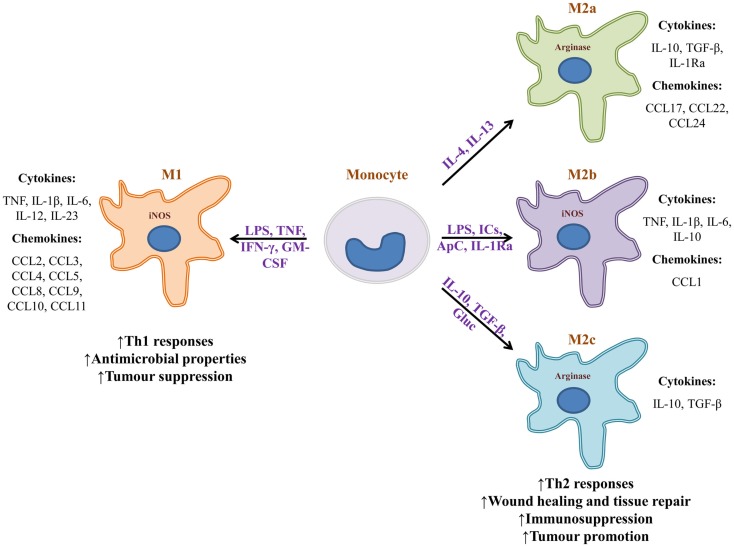Figure 1.
Monocytes can become phenotypically distinct macrophages. Upon encountering different stimuli, monocytes turn into highly microbicidal (M1), or into immunosuppressive macrophages (M2). Stimuli can range from microbial substances to biochemical signals provided by the microenvironment of a given tissue. Many of the cytokines that bias macrophage phenotype are provided by surrounding lymphocytes or other non-immune cells. Macrophage subtypes release a vastly different array of cytokines and chemokines that can either promote inflammation and sometimes tissue destruction, or wound healing and tissue repair. M1 macrophages are known to be tumor suppressive whereas M2 macrophages generally promote tumorigenesis. It is important to note that macrophage bias is a spectrum and is reversible. IC, immune complexes; ApC, apoptotic cells; Gluc, glucocorticoids.

